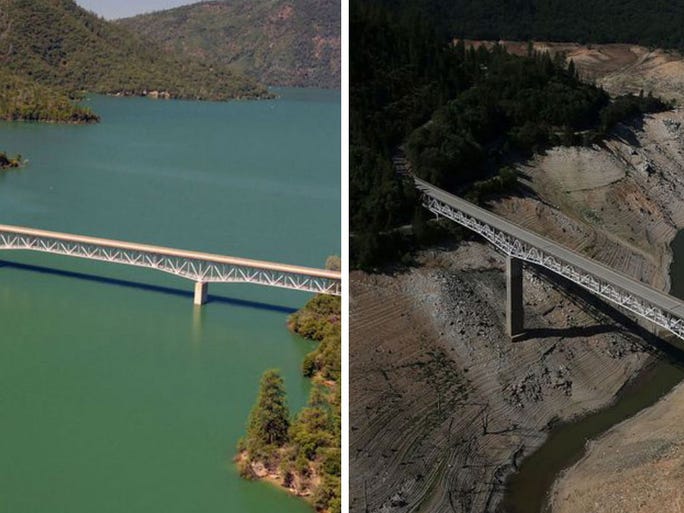By Kathryn Maureen Ryan
Impunity Watch Managing Editor
Washington DC, United States of America – The US Drought Monitor recently stated that 58 percent of California is currently experiencing “exceptional drought,” which is the most serious category on the agency’s five-level scale. California is now experiencing its third year of severe drought with no end in sight. The drought has devastated the region economy costing an estimated $2.2 billion dollars in economic losses and costing more than 17,000 seasonal and part-time job, mostly in the agricultural sectors. The drought has devastated crop production and contributed to massive wildfires over the past three years. Nearly half a million acres, approximately 5 percent of irrigated cropland, is going out of production in three of the key agricultural regions of the state. A new study indicates that California’s massive drought may be an indicator of things to come in the Southwestern United States if greenhouse gas emissions continue at the current levels.

According to a new study published in the Journal of Climate Science the southwestern United States faces an 80-90% chance of experiencing a decade-long mega-drought by the year 2100 if greenhouse gas emissions continue at their current levels. According to the study regions of California, Nevada, Arizona and New Mexico will face deep dry spells if climate changes continues to accelerate meaning that “A drier Southwest is also a Southwest at risk of a megadrought,” said study author Toby Ault, a climate scientist at Cornell University.
“A megadrought is a drought that’s just as bad, in terms of severity, just as dry as the big droughts of the 20th Century, so think 1930s Dust Bowl, think 1950s drought, but much longer lasting,” said Toby Ault, a professor at Cornell University. “I think we’d really have to change the way we think about water and the way that we can use water because right now we’re on a path that would be unsustainable if we had a drought of 35 years,” Ault said. While activists and local officials have called on citizens to conserve water there is still a concern that over-use of water is contributing to the drought, especially in the industrial sectors where corporations such as Nestle bottled water operations have continued to deplete the state’s water supplies. Water theft has also become a problem, local officials across the state have reported water theft from fire hydrants sparking concerns that firefighters may not have enough water to put out fires.
The drought has forced agricultural business and other industries dependent on water to drill deeper into the surface in search of fresh sources of groundwater, depleting the states finite groundwater reserve. Since the beginning of 2013, close to 63 trillion gallons of groundwater have been depleted from the Western State’s groundwater reserves because of drought. While officials in California are trying to curve private water drilling in the state, historically state water law has favored industries with the greatest ability to access water reserves.
This tremendous loss of groundwater has had an immense environmental impact on the region. According to researchers at the University of California at San Diego and the United States Geology Survey this water loss has lifted the earth’s crust by an average of about one-sixths of an inch over the past 18 months. “The effect we’re looking at is that if you take weight off a spring, the spring goes up,” said Duncan Agnew of the Scripps Institute of Oceanography.
The data presented in the Journal of Climate Science study suggests drought could become a new norm in the Southwestern United states unless action is taken to reduce global greenhouse gas emissions. The past three years of drought in California and the devastating effect it has had on the region and its economy have demonstrated the increasing importance of climate change mitigation and adaptation policy.
For more information please see:
ABC News – Water Wars: Californians Stealing From Hydrants amid Drought – 3 September 2014
USA Today – California’s 100-Year Drought – 3 September 2014
The New York Times – Desperately Dry California Tries To Curb Private Drilling for Water – 31 August 204
Al Jazeera America – what Should California do about its Drought? – 26 August 2014